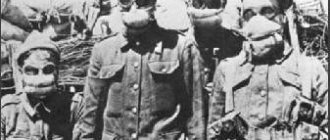The topic of the harm and safety of laughing gas is surrounded by many emotional speculations that periodically appear in newspapers or on the Internet. This does not always form an adequate understanding of the properties of dinitrogen oxide, areas of its use and effects on humans. At the same time, the main question - whether nitrous oxide actually causes harm - often remains unanswered. Let’s take a closer look at the areas of application of this mixture, the mechanisms of its effect on the human body, and let’s figure out whether people using N2O (nitrous oxide formula) have good reason to be concerned.
Description of the drug
Nitrous oxide gas is colorless and odorless, heavier than air (density 1.527). In a ratio of 1:2 it can dissolve in water. At a pressure of 30 atmospheres and a temperature of 0 C, as well as at a pressure of 40 atmospheres and ordinary temperature it turns into a colorless liquid. From 1 kg of Nitrous Oxide liquid, 500 liters of gas are formed.
In small doses, the use of the drug causes a slight feeling of intoxication and drowsiness. Hence another name – laughing gas. When inhaling pure gas, asphyxia and a narcotic state occur. Medical nitrous oxide, when dosed correctly, causes a narcotic state without prior stimulation and other side effects.
The drug does not have a strong narcotic effectiveness, and therefore it is advisable to use it in combination with other types of anesthesia, more powerful.
First aid for poisoning
The victim must be given first aid. In case of poisoning with nitrogen compounds, hypoxia develops, which leads to disruption of the functioning of the brain and heart. It is important to take the person out of the room into the air, while maintaining personal safety (wear a respirator or gas mask).
The victim must be reassured and explained that he is safe. If possible, give strong sweet tea without preservatives or additives, and give water.
If the victim is in a state of fainting, you need to lay him on his side and place a cushion or pillow under his head. It is important to monitor the work of the heart muscle (pulse) and the presence of breathing, as pulmonary edema is possible.
An overdose of nitrogen is harmful to health, so the victim needs treatment in a hospital. It is not recommended to self-prescribe medications. Drinking plenty of warm fluids will help ease the victim's condition.
pharmachologic effect
Nitrous oxide gas is chemically inert and does not irritate the respiratory tract. Practically does not change in the body, does not bind to hemoglobin. In plasma it is in a dissolved state. After inhalation ceases, after a short period of time (10-15 minutes) it is completely eliminated in its original form through the respiratory tract.
Anesthesia occurs very quickly due to the low partial pressure between the gas and the blood. At a concentration of anesthetic of 65-70%, complete anesthesia occurs, and at a concentration of 35-40% an analgesic effect is achieved. A gas concentration of more than 70% causes the effect of hypoxia.
How was laughing gas used in the past?
Dentist Horace Wells lived in the 18th century. He was the first to use “laughing gas” on his patients to dull pain.
Two centuries ago, dental treatment boiled down to the fact that the patient screamed heart-rendingly, and those around him heard it all. The psyche of many people could not stand it; they could go crazy even before visiting a doctor.
During the procedure, the patient's head was held tightly, often by several people, and the doctor himself had to have titanic endurance, since the procedure for removing teeth was not for those who are weak in spirit.
Wells made several attempts to convince others that the gas really was an anesthetic. During the first demonstrative dental treatment, the dentist gave a small dose to the patient, which is why he was unconscious for less time. The gas also affected the witnesses of the procedure. As a result: the patient woke up and writhed in pain, while those around him laughed uncontrollably.
First demonstration of laughing gas in public.
The second public experiment was also unsuccessful. This time, Horace gave too much of the drug, which is why his patient almost died.
The dentist stopped experiments and abandoned the idea of easing the pain of patients with nitrous oxide, but his work was continued by another doctor, Wells’s colleague Morton. He successfully used gas and became known as a pioneer. Such actions by his former partner left Wells despondent. He demanded public recognition of his primacy in the idea of using nitrous oxide as an anesthetic, but Morton ignored this.
How did Priestley come up with such an incredible discovery and where did he get the formula for nitrous oxide?
Indications for use of Nitrous Oxide
Anesthesia using Nitrous Oxide cylinders is currently widely used in surgical dentistry, operative gynecology, and surgical practice..
Primarily in anesthesiological practice, Nitrous Oxide gas is used as a component of combined anesthesia in combination with muscle relaxants, analgesics and other anesthetics (enflurane, fluorotane, ether) with an admixture of oxygen (20-50%).
Nitrous oxide cylinders are also used for tooth extraction, removal of drainage tubes and sutures, in the postoperative period to relieve traumatic shock and to alleviate other pathological conditions accompanied by pain that is not relieved by non-narcotic analgesics.
Analgesia with Nitrous Oxide balloons, in addition to minor surgical interventions, is carried out in ambulances for patients with acute myocardial infarction, acute coronary insufficiency, acute pancreatitis, burns and severe mechanical injuries.
Medical analgesia with Nitrous Oxide with 50-60% oxygen content is effective in conditions of shock . The high oxygen content in the mixture also provides a therapeutic oxygenation effect.
Preparing for anesthesia
When a patient is prepared for nitrous oxide inhalation, he is given a sedative. Recently, anesthesia is increasingly combined with such drugs as fluorotane and cyclopropane. Thanks to this, it is possible to achieve the necessary depth of anesthesia to perform a major surgical operation. However, these drugs may not be used for every organism. They have a number of contraindications that must be taken into account by the doctor.
Before inhalation anesthesia, you must adhere to a fasting diet and also take the pills given by the doctor. Basically, the patient is prescribed sedatives that relieve stress before surgery and reduce tension levels.
Interaction with other drugs
Anesthesia with Nitrous Oxide balloons goes well with epidural anesthesia, in combination with other inhalational anesthetics (fluorothane, cyclopropane, trilene, ether), with intravenous narcotics (barbiturates and triobarbiturates), with neuroleptics and muscle relaxants. During operations, a gas to oxygen ratio of 2:1 or 3:1 is required.
With long-term anesthesia with the simultaneous use of muscle relaxants, there is harm from Nitrous Oxide - the accumulation of carbon dioxide with the subsequent development of hypoxia, which can cause cardiac dysfunction during surgery.
Another harm from Nitrous Oxide is the ability to enhance the depressive effect of narcotic analgesics and barbiturates on the respiratory center.
Disadvantages of this type of inhalation
Even this gentle inhalation method has its drawbacks. These include the following:
- It is impossible to put the patient into a state of deep anesthesia. This method does not allow for major surgery.
- If a large dose is administered, the level of oxygen saturation in the blood will decrease. This can cause hypoxia.
- The contractile activity of the myocardium is insignificant, but will decrease.
- If during the operation the patient feels severe pain, he can jerk sharply, thereby complicating the doctor’s work.
- Large doses may contribute to the deterioration of brain activity.
Safety of use and harm of Nitrous Oxide. Effect on the body
The harm of Nitrous Oxide and its negative impact on the respiratory, cardiovascular systems, kidneys and liver are very insignificant, therefore this drug is considered one of the safest.
Medical Nitrous Oxide in concentrations up to 80% is practically safe for the body and does not have any negative effect on the functions of vital organs.
For a newborn, harm occurs from Nitrous Oxide when the gas is inhaled for a long time by a woman in labor - the child may be born with low Apgar scores.
On the part of the blood elements, the use of gas may cause slight changes. Nitrous oxide has been found to be harmful to bone marrow functions. With long-term use (2-4 days), depression of bone marrow function occurs and the number of leukocytes decreases.
Various experiments have shown that Nitrous Oxide is harmful to cell division and growth with long-term use. In the case of treatment of tetanus, long-term use of the drug leads to agranulocytosis and myelodepression. November 7, 2013
Upcoming events
Joseph Priestley, a British chemist (in his time it was fashionable to call such people “natural philosopher”), discovered not only nitrous oxide. He also managed to indulge in oxygen, so much so that this element was firmly included in the periodic table.
However, before oxygen, Joseph discovered nitrous oxide and, with its help, created many new discoveries in the field of chemistry and botany. By heating iron filings, which he moistened with nitrous oxide, Priestley received “phlogistinated air” (nitrous), and he moistened everything with this nitrous oxide, since he could not think of a purpose for it in society so that it would be useful. At the same time, in the 1775s, the scientist discovered nitrogen monoxide.
Tooth extraction using ether anesthesia.
Nitrate air, NO, is rightfully considered the older brother of nitrous oxide, N2O. The “little brother” has many names: nitrous oxide, “laughing gas”, nitrous oxide, or dinitrogen oxide, hemioxide.
The colorless gas has an interesting property: when the temperature drops to –91 degrees, it turns into “merry snow.” Two degrees plus - and the snow becomes a liquid substance.
The discovery of “new air” occurred during the study of the salt lake Don Juan in Antarctica. The salt concentration in the air reached 40%. The salty air reacted with volcanic rocks containing a lot of iron, and, as a result, “new air” was formed. Joseph Priestley took it for detailed study.
In 1771, “new air” was discovered on a salt lake, and in 1772 Joseph Priestley synthesized it and derived the formula. It took him only a year to study the new gas, and society spent decades trying to find a use for this gas. Scientists of those times did not understand the properties of the gas and also had no idea for what purpose it could be used.
Consequences of drug use
By using the mixture in order to feel the narcotic effect, a person exposes himself to great danger. The components included in its composition, with prolonged exposure, can lead to the death of brain cells. The consequences of consuming this nitrogenous compound can be very severe: first, memory deteriorates, then progressive personality changes occur. Along with the brain, the bone marrow structure is also destroyed. With constant use of nitrous oxide, there is a risk of developing leukemia and disorders of the hematopoietic process.
In addition, mental disorders are observed in people who abuse this substance. Attacks of fear of death, hallucinations, obsessive thoughts, and periodic sensations of approaching danger occur. Suicidal tendencies may appear against the background of a depressive state provoked by this compound. Among the consequences of drinking laughing gas, impaired coordination of movements often occurs.
The greatest threat is the mixture in its pure form. Inhaling it can be fatal.
The effect of this compound is especially detrimental to the developing fetus in the womb. If she breathes nitrogen, this can lead to fetal hypoxia and the development of various congenital anomalies in the child.
80% of the air we breathe consists of nitrogen. This gas is transparent and colorless and has no odor. According to research, humans are made up of 2% nitrogen, which is found in some cells and tissues. Despite this, it is very easy to be poisoned by nitrogen or nitrogenous compounds. Such intoxications are dangerous for humans and can be fatal . In this article, we looked at nitrogen poisoning, its causes and clinical manifestations, as well as ways to provide first aid to a person with nitrogen intoxication.
Reasons for the development of nitrogen intoxication
The most stable form is the diatomic gas molecule N2, which makes up almost 80% of the Earth's atmosphere, and with each breath a large dose enters the human body. And if under normal conditions, with normal atmospheric pressure and sufficient oxygen content, due to its chemical inertness, it has practically no effect on the state of the body, then when certain parameters of the external environment change, its entry into the body can cause nitrogen poisoning.
Intoxication in the overwhelming majority of cases is associated with violation of safety precautions when working with this chemical. It can develop in the following situations:
- accidents in industries where gas is used, or violation of the integrity of containers during its transportation -
- accidental ingestion of gas into the body when working with it in a chemical laboratory -
- diving of divers to great depths, during which there is a risk of developing deep-seated sickness -
- use of asphyxiating gas during hostilities.
Nitrogen poisoning: consequences and prevention
A mild degree of intoxication does not lead to complications, but requires observation by a specialist. Severe poisoning leads to chronic diseases.
Consequences:
- Disorders of the heart, blood vessels, and blood clotting.
- Digestive system disorder, colitis, inflammation, peptic ulcer.
- Pathology of the lungs and respiratory system.
Preventive measures will help avoid poisoning. In production, the safety engineer must provide instructions before each work estimate. And in the event of an emergency, provide people with gas masks or protective respiratory masks.
Scuba divers should not stay under water for longer than the prescribed time. A ground instructor ensures safe navigation and will provide assistance in the event of an emergency.
In everyday life, nitrogenous substances should be stored in a closed container out of the reach of children.
Nitrogen is an important component of the life cycle. The metallurgy and oil refining industries cannot do without it. Gas is widely used in medicine and light industry. Poisoning with a substance leads to irreversible health consequences. Therefore, it is necessary to be extremely careful when working with nitrogen.
Video: what happens if you drink liquid nitrogen
Read further:
Rehabilitation after a heart attack, prevention of new attacks and care
Donormil overdose









